I had high hopes for Crysis 2, a game that had a lot to live
up to, considering its predecessors essentially set the bar for freedom and
graphics in first-person shooters. What’s more, the original Crysis was a
PC-exclusive, allowing all sorts of graphical extremes to be attempted. Crysis
2, however, is a console-centric title, with a port to PC; the possibilities
are more limited by static hardware requirements. Fortunately, this hasn’t
stymied the developer Crytek, as Crysis 2 is a fantastic looking game, and
brings forward essentially every innovation from the original, albeit with some
limitations in map size and an annoying inventory system. The sheer length of
the quality campaign, matched with a decent deathmatch-style multiplayer may
prove Crysis 2 to become a console classic on par with other greats of the
genre.
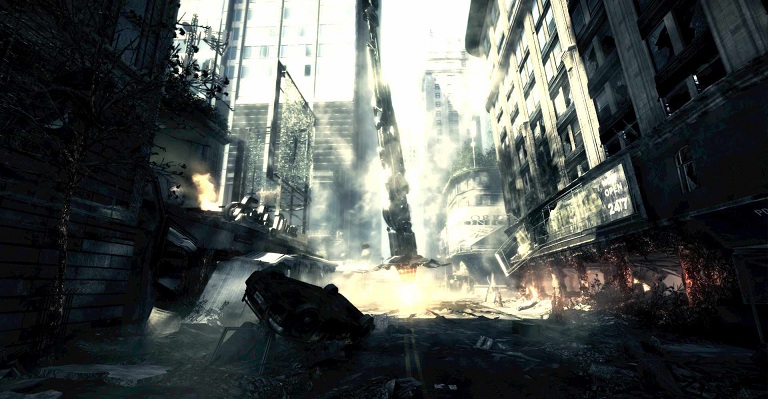
Crysis 2 picks up quite some time after the conclusion of
Crysis: Warhead in which aquatic aliens, entombed on a south pacific island,
are awakened and have begun to conquer Earth. The separation between the two
games is evident, apparently to allow console players to start from fresh
rather than continue the plots started in the original and its expansion. The
alien Ceph’s initial strike involves releasing a virus that decimates the human
population, causing their bodies to break down into viscous goo that they then
use in the construction of equipment. From then on it’s a simple matter of
deploying ground forces to mop up any remaining resistance. New York is one of
the primary targets, and as a marine named Alcatraz, it’s up to you and a
contingent of marines to support a powerful asset on the ground: Prophet, a
nanosuit-wearing operative that served as the team leader in Crysis.
Unfortunately, the submarine used to infiltrate the city is
destroyed by an enemy assault craft and you emerge as the only survivor.
Prophet locates you amongst the wreckage and gives you his suit, explaining
that he has contracted the virus himself before committing suicide. However,
there is a chance: the unique design of the suit can adapt the virus to
possibly create a cure, but the only person who might know how is located
across the city. It is at this point you are sent into the action, first
encountering Cell, a private army hired to capture or kill Prophet both to
prevent the spread of virus as well as securing the suit for anti-virus
research. Unfortunately, they tend to be a little trigger-happy but are
relative pussycats compared to the shock troops of the Ceph, the alien force
assaulting the city. Fast, agile and armored, the multiple varieties of Ceph
release nano-stimulators that are accumulated by the suit, proving to be an
interesting way of inserting upgrade mechanics as you progress through the city
as it becomes more and more destroyed and corrupted by the encroaching aliens. Players
can also manipulate the attachments on current weapon, bringing it up into
focus to choose parts, such as a silencer, assault scope or grenade launcher.
However, the attachments are dependent on the particular weapon.
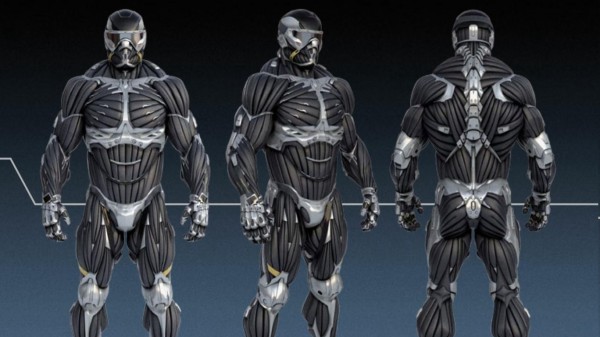
The gameplay mechanics in Crysis 2 remain much the same as
in Crysis, with the nanosuit providing the majority of differentiation from
other shooters of this era. Limited by a small energy reserve, the suit can
allow the player to armor himself against incoming attacks by diverting damage
to the energy bar as well as taking over the improved aim of the strength mode
from the original. A stealth mode camouflages the player from detection in most
situations, but depletes energy quickly and provides no protection against
enemies immediately aware of your presence. The speed mode of Crysis 2 is
automatically triggered upon sprinting, rather than being directly activated, and
the strength mode has been integrated into particular actions, such as jumping
or throwing. The visor allows for a tactical analysis of the battlefield at any
time, including points of interest, enemies and objectives that can all be
tagged for normal viewing outside of the visor. It really does come in handy
when presented with multiple solutions to a puzzle. Nanovision is useful in a few situations when visibility is obscured, granting essentially an
infrared view to the player. Combined with the Predator purring noise of the
stealth mode being activated, the Nanovision allows the player to really feel
like they’re hunting prey as they complete their objectives.
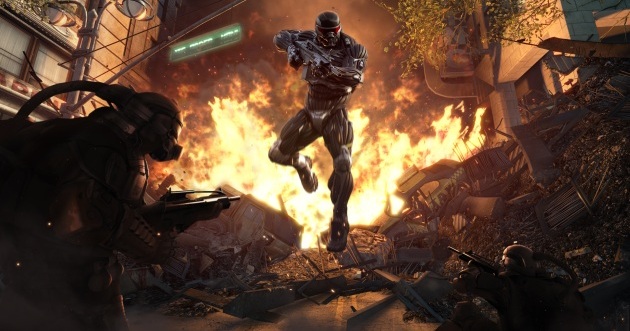
These powers are activated by a menu or hotkeys, and are
simple and intuitive to use. The only problem I had was with the weapon
selection, in which all the weapons that can be used are chosen from a single
unseen menu, navigated initially by the mouse wheel (that can be reassigned). However,
that selection apparatus is the only way to choose weapons, and each weapon
must be completely deployed before switching to the next. It would have been an
excellent idea to allow the player to choose from an actual list that can be
seen, and quickly, as I was often killed by an enemy charging me because I was
busy switching from my grenades, to the missile launcher, to the C4, to the
long-range gun, to my ideal weapon. Counter-Strike did it right in that regard.
Other than this medium-level concern that bothered me a few times, combat is
quick, simple and oh so good when everything works out the way you planned.
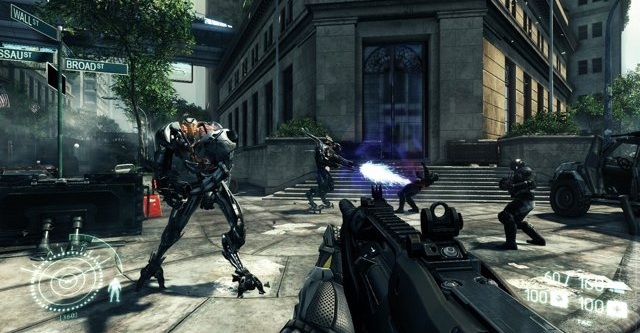
While Crysis 2 has lower system requirements than the
original, it remains a beautiful spectacle as buildings collapse in front of
you, cars are kicked around and dust clouds billow up from the destruction.
Easily better looking than many other titles released recently, the only
limiting aspect (although almost imperceptible) is the fact that the
free-roaming dynamics of Crysis have been curtailed in favor of more tightly
constricted parks and indoor areas. These areas are usually big enough to
provide a great deal of planning capacity and stealthy advance, but they are
often bottlenecked into individual areas at certain points. Levels are more
clearly demarcated in briefing screens, and the inability to go prone indicates
that it is moving closer to the faster-paced combat of Call of Duty rather than
the methodical, sometimes glacial speed of the original in which causing an
alert has more of an impact. Also, the environment is not nearly as able to be
manipulated or destroyed through your actions, other than the random signboard
or concrete railing. This is a step down from the whole buildings that could be
ruined in Crysis, or the readily available vehicles that had shootable gas
tanks, tires and drivers.
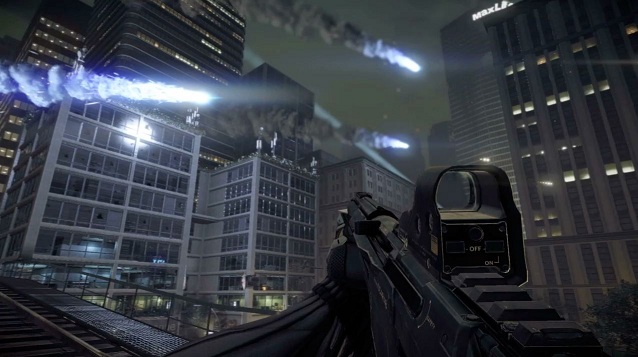
Crysis 2 is a fantastic game, limited only by one design flaw and the choice to switch to consoles as the primary platform. Swift and deadly, the player can control the battlefield at his or her pleasure, dispensing harsh justice as they see fit. Multiple play styles can be accommodated and great story events keep the pace fast and furious until the bitter end. Crysis 2, developed by Crytek and published by Electronic Arts, is available for the Playstation 3, Xbox 360 and PC now. A definite contender for classic status, I recommend it unquestioningly if you’re a fan of shooters.